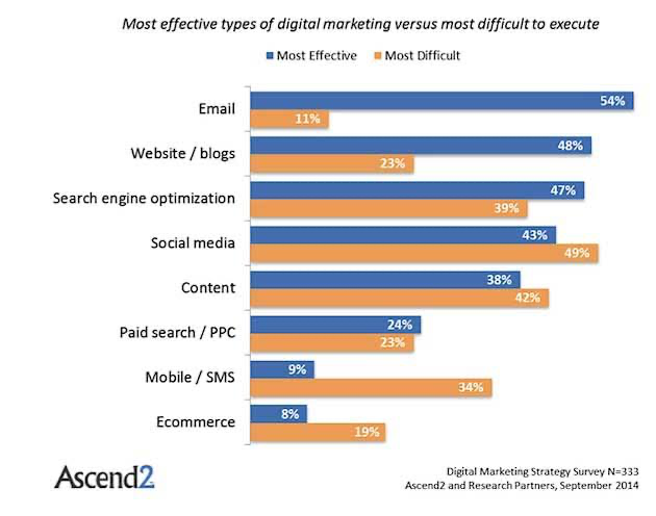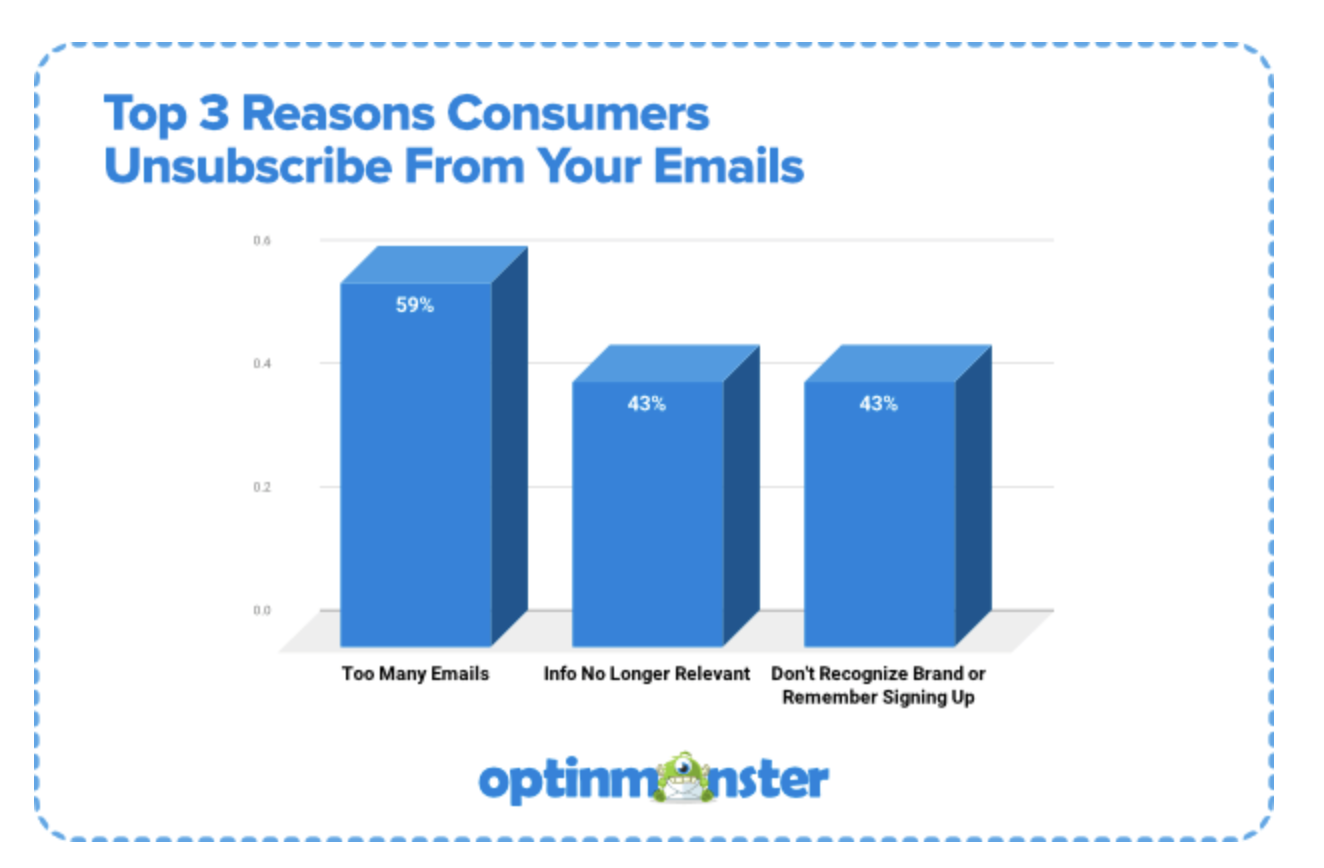Why search for clients when you can get them to come to you?
You might actually need to do a bit of both. But, in healthcare, one should take precedence over the other.
Here’s why.
Marketing strategy has two principal categories: outbound and inbound.
Outbound involves more traditional customer outreach:
Hey! Come check out this cool product I’ve got!
Inbound involves a subtler, more symbiotic approach, utilizing value-based materials that guide the consumer toward your product or service.
I hear you’re facing an unexpected problem. My website has an article that might help!
Both strategies have merit, and marketers will often rely on a combination of the two.
But:
You’re in telehealth
Your business is providing solutions to healthcare challenges. Educational materials and gentle guidance are expected of you—and it’s only natural your marketing efforts would lean heavily on an inbound plan.
Also: People can be pretty skeptical when it comes to their health.
Aggressive outbound tactics, such as manipulative TV campaigns or disruptive pop-ups, can read as impersonal, creating unwanted distance between your practice and your audience. (Anyone searching for expert care won’t necessarily trust an overly persistent pitch.)
So, while your ultimate marketing mix is up to you, an inbound strategy will no doubt take up a big portion of your program.
Inbound marketing has a proven track record, and its practice, by design, exudes empathy and professionalism—two of the most desired qualities in telemedicine.
What follows is a blueprint for building your inbound marketing plan for attracting patients and adopters to your service without the hard sell.
Get social
Sometimes the negative effects of social media outweigh its advantages.
This is not one of those times.
Inbound strategy is founded largely on organic engagement: unsolicited interactions between you and your most coveted consumers.
And with social media, you’re essentially served free interactive platforms on a platter.
Why wouldn’t you use them?
With 82% of the US population currently in possession of a social networking profile and 50% of those users employing social media as a research tool for products/services, it’s a safe bet a social media strategy can drastically increase your market reach.

This survey ranks social media among the top four most effective digital marketing methods.
Why is social media such a successful marketing channel?
Maybe because a lot of it is raw and unscripted, providing you with honest, in-the-moment feedback from real-life targets.
The infamous “like,” “favorite,” and “subscribe” buttons can give your practice near-instant insight into which types of content, events, announcements, or other telehealth offerings have the power to delight users and keep them engaged. Public comments and private DMs can also hone your inbound marketing technique by providing added perspectives on audience pain points and flagging areas of interest for potential telehealth consumers.
Social media provides you with honest, in-the-moment feedback from real-life targets.

Basically, social media is a no-brainer for your telehealth practice.
However, there are a few cardinal rules to remember:
1. Do your research before deciding on a platform (or two, or three…)
Depending on the age, location, and cultural background of your prospects, some social media platforms might be more impactful than others. Conduct patient polls and leverage your CRM to find out where your ideal audience spends the bulk of its online time. And don’t be afraid to mix and match your channels as needed.
2. Keep it current
Many social media platforms are biased toward high levels of engagement. (So, the more users who interact with your post, the more likely other people will get to see it on their respective feeds.) An easy way to encourage engagement is to focus on up-to-date topics, breaking news, or content related to the time of year. (Think: “Tips for avoiding heat exhaustion this summer” or “How to fight this winter’s flu strain.”)
3. Ask for feedback
Another way to encourage engagement is just to ask for it. Invite followers to weigh in on content or offer their comments and queries about telemedicine. A simple “What do you think?” at the end of a text post can spark an ongoing conversation and possibly even improve your rankings.
4. Set goalposts
Get a sense of the results you’d like to see before you get started. Are you aiming for a specific number of followers? A protracted increase in likes and shares? Define what social media success means to you ahead of time, so you can pivot to a new strategy if one or more channels come up short.
Build a catalogue of content
There’s no way around it: Content is the alpha and omega of your inbound strategy. It’s the bait and the hook: the most effective way to capture and maintain your audience.
How’s it done? Some basics first:
Content is any material that provides value for prospective customers, helps convey the benefits of your service, or both.
While the word “blog” might spring instantly to mind here, valuable material can come in a myriad forms, including articles, white papers, eBooks, videos, podcasts, infographics, emails, newsletters, and more. There are no rules and no limits whatsoever in terms of the “what.”
But, as hinted above, it’s the “how” that gets tricky.
No matter the format, the best content should exhibit several qualities at once. It should be tantalizing but also informative; stylish but practical; engrossing but educational. Enough head-turning imagery and eye-catching headlines to generate clicks, blended with enough genuine, thought-provoking, problem-solving substance to lure prospects back for more.
Here are some tried and true strategies to help achieve this feat:
Hit the refresh button early and often.
News happens fast. Tastes change frequently. Trends come and go.
Make sure you keep your content front and center by deploying a rotating schedule of up-to-the-minute material. Examples include:
- Update your blog at regular intervals with breaking industry news, relevant interviews, or expert editorials on developments in telehealth.
- Post recent patient reviews detailing positive experiences from the past month or, even better, the past week. Prove to prospective clients your practice is open, thriving, and ready to welcome new patients.
- Produce a series of videos, podcasts, or real-time webinars to tackle patient questions or discuss new happenings in medicine (tips on protecting against COVID variants, for example). Content series come with an in-built sense of anticipation and they inspire direct participation. Plus, real-time formats like webinars offer a huge advantage by giving you immediate access to your audience.

- Craft educational materials such as white papers or eBooks to synthesize contemporary research and present it to patients and adopters in digestible terms. Expand on these assets as new industry findings become available; this will show your practice is well aware of current dialogues in the medical field.
- Broadcast seasonal content featuring advice on staying healthy as the weather changes. Again, this can incite audiences to keep returning as new content becomes available.
Optimize what’s in your control.
Obviously, some pieces of content have a life of their own. Social media posts, for example, might generate comments you can’t edit for clarity or reconfigure for keyword targeting.
But for those items you can control, techniques for optimization will serve you well.
Chief among these is SEO (search engine optimization), the granddaddy of digital marketing.
SEO strategy is incredibly complicated (its many intricacies are beyond the scope of this post), but here are some points to consider when building your own SEO procedure:
- Length
Longer content can boost your search engine positioning. Shoot for 1000+ words for each long-form article, eBook, white paper, etc. Just remember to keep your text meaningful and succinct (readers can spot filler a mile away).
- Keywords
A comprehensive strategy for embedding applicable keywords (i.e., words frequently searched online and/or words uniquely pertinent to your desired audience) is a must for your inbound marketing plan. Keywords should be selected with care, paying special attention to specific benefits your practice has to offer, as well as to any localized vocabulary that can enhance geo-targeting (for smaller, community-based practices).
Your selections should then be placed strategically throughout your text, leaving room for updates as necessary. (Note: A keyword analysis tool can help you spot shifts in customer search habits, allowing you to tweak your content and keep in step with consumer behaviors.)
- Signals
Different aspects of your content send different signals to search engines, ultimately providing information on your site’s perceived levels of quality and credibility. Such signals include links to your content from other domains (achievable via link or post exchanges with affiliated organizations or citations in digital news publications) and positive reviews you acquire on third-party platforms. In theory, the more signals you have, the greater your chances of moving up the search engine ladder.
Consider your consumers’ POV
It goes without saying your content should always speak to the needs of your prospects.
Materials should only cover information your target audience is actively invested in. They should likewise be guided by consumer research obtained through patient histories, user surveys, and customer analytics.
But there’s more to it than that.
You should also consider your audience’s preferred method of intake, in addition to how well your content is received over time. To do this:
- Make sure each content asset incorporates a flexible design, viewable across all devices. (A video that can’t be formatted to a smartphone is as good as no video at all.)
- Establish a system for tracking performance metrics: as in, how many people are reading, watching, or otherwise engaging with your content, and how often. (See our installment on telehealth websites for ideas on which metric markers to trace.)
Always keep “warm”
Once people begin to consume your content on a regular basis, what do you do with them all?
This is where lead nurturing comes in.
After you’ve hooked a possible client, he magically transforms from “unknown prospect” into “active lead.”
You’ve caught his eye. He’s no longer just a casual observer; he’s sincerely interested.
And interested parties will usually offer some sign they’re committed to getting to know your practice. They’ll give up their email address to download your latest white paper. Or they’ll sign up for text alerts using their cell number.
From this point on, your task is to keep your lead “warm” by getting in touch again and again.
Most marketing teams choose email campaigns as their primary game plan for warming or nurturing leads. This is mostly thanks to email automation tools that integrate seamlessly with customer databases and can send multiple personalized messages in one go.
And, since 78% of marketers report a definite uptick in email engagement over the last year, a robust email strategy will probably be well worth your time.
Some thoughts to keep in mind as you build your email campaigns:
- The object of email is to remain front of mind. As with long-form content, “hot” topics will help you. Announcements for upcoming events, exclusive analysis of recent medical research, or in-house videos can assist in generating audience buzz.
- Your master list of contacts should include patients both past and present. Unless a person has explicitly requested to unsubscribe from your emails, you should always keep them in the loop.

- Less is more. 59% of consumers unsubscribe from an email list because they feel they’re receiving “too many emails.” Aim for a happy medium between “no emails at all” and “please stop sending messages.” Some initiative is good. Too much is not.
- Calls-to-action (CTAs) are your friends. People need runway lights to get from A to B. Wherever possible, add an email postscript detailing digital “next steps” for the reader ( “Click to hear our latest podcast episode” or “Sign up for tomorrow’s webinar”).
Take it offline
Up to this point, we’ve talked about inbound marketing as a purely digital strategy.
But the truth is, inbound can also benefit from good old-fashioned legwork.
That’s right: It might be worthwhile to get out and meet real people.
Or at least provide them with real, physical outreach materials.
Many of your potential adopters will likely be older individuals—meaning they’ll probably have more reasons to seek healthcare, but less of an inclination to communicate digitally.
The key is to meet prospects where they’re most comfortable. And, in some cases, they might be more responsive to a flyer in their mailbox than a message in their inbox.
As part of your broadscale market research, you should understand your consumers’ general profiles. Information surrounding demographics such as:
- where your prospect lives
- how old your prospect is
- whether your prospect has a family
And preferences like:
- what services your prospect is looking for
- what hobbies your prospect has
- which businesses/organizations your prospect is attracted to
will help in brainstorming channels for interpersonal connection offline.
If your practice is mostly local, you might want to explore partnerships with community centers (schools, gyms, houses of worship, etc.) or popular hangouts (bookstores, coffeehouses, theaters, and the like) to garner support. See, if any of these organizations are willing to host an evening of telehealth trials, a talkback with a neighborhood specialist, or a kiosk featuring telemedical literature.
However, if you’re looking to cast a wider net, these tactics might not be all that practical.
In fact, if you’re hoping to reach potential users on a massive or even national scale, inbound marketing shouldn’t be your only play.
You might want to go bigger: which means you might want to branch out.
The next installment in this 5-part series will cover useful tips for outbound marketing in telehealth and help acclimatize your practice to the world of external advertising.
This is the third of a 5-part series. You can read the others here:
- Why You Need a Telehealth Marketing Plan
- Why Your Telehealth Website Has to Be Amazing (and How to Get It That Way)
- Inbound Marketing Strategies for Telehealth Practices
- Outbound Marketing Strategies for Telehealth Practices
- The Telehealth Tools You Need to Power Effective Growth Marketing







